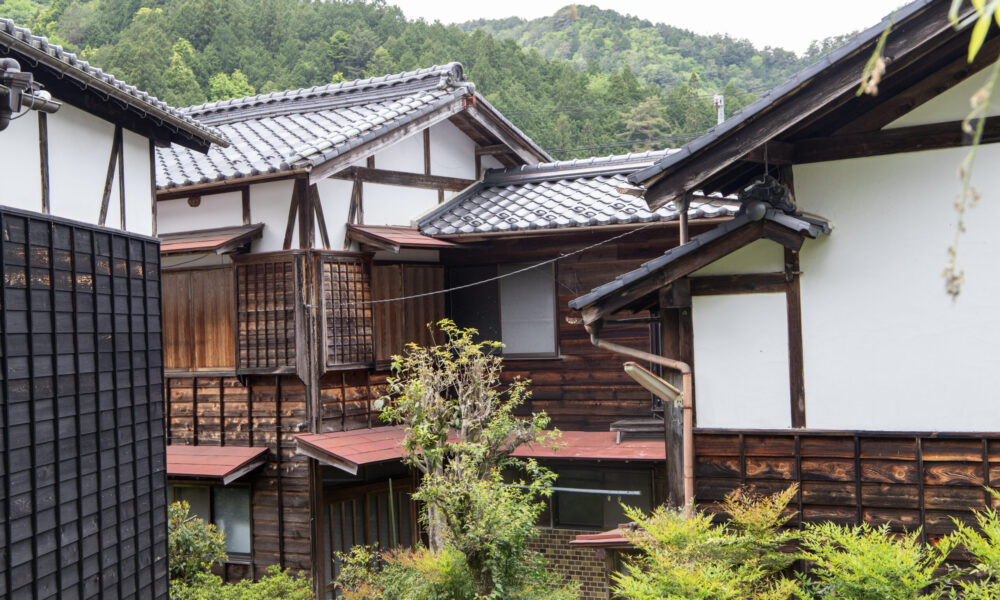Travel and Places
Kyoto’s Nakasendo Trail: In The Footsteps Of The Samurai
By Daniel Neilson 19 May 2024 | 4:00 pm A bell marks the beginning of the Nakasendo Trail, a 540-kilometre route through the central mountains between Kyoto and Tokyo. But it’s not a ceremonial bell. It is there for one purpose: to scare away bears. And so, with a pleasingly loud clang and a photo of a sign that we presume reads “Beware of…
A bell marks the beginning of the Nakasendo Trail, a 540-kilometre route through the central mountains between Kyoto and Tokyo. But it’s not a ceremonial bell. It is there for one purpose: to scare away bears. And so, with a pleasingly loud clang and a photo of a sign that we presume reads “Beware of the bear”, we begin our trek into the misty hills of Japan. Our aim is to walk the most beautiful section of the trail from Magome and Tsumago. That’s if a bear doesn’t scupper the plans.
We’d started our journey to the mountain town of Magome by train from Osaka, known as the neon jungle. Osaka is the Japan of flashing signs and neon lights, shouty electronic billboards, and skewers of meat on smoking street food stalls. But now it was time to slow down and spend a few days at a walking pace. It was time to enter Edo Period Japan (1603-1848) when the samurai warriors ruled.
READ ALSO: Embracing The Japanese Way Of Living Healthy
Magome is an atmospheric mountain village of traditional wooden houses lining a stone path. There are a couple of classy souvenir shops and street stalls selling soba noodles and Hillbilly Coffee for a divine pour-over coffee.
The Nakasendo Trail—the central mountain route—connects Kyoto with Edo, modern-day Tokyo. Along the path are 69 staging posts, Magome and Tsumago among them. It was the highway of the 16th century. It was also one of the key routes used by the samurai, the military leaders of the time, and other dignitaries and traders. Today, most of the route now consists of modern roads. But here, in the Kiso Valley, it has been restored with traditional buildings, inns, and restaurants.
Leaving Magome, we immediately entered the forest—another bell. We climbed up to the first mountain pass, through green forests, along raging rivers and past high waterfalls. Around halfway was a tea room where they offered hot green tea and a warm fire for a small donation. Just as they would have done for the past few hundred years. Each dwelling along the route appears to have a warm kettle strung above a fire by way of welcome. Tea is more than a drink; it’s a ceremony that brings people together. The boiling kettle is a sign of welcome.
Further on the path, we trotted through smallholdings, farmland, and rice paddies until we reached Tsumago, which, like Magome, has been restored to its 18th-century heyday. Yet it’s not a living museum. There are tourists, of course, but it’s still where people live and work. We ate oyaki, delicious steamed buns filled with white bean paste or stewed chicken, and shared a bowl of soba noodles.
It is eight kilometres over the mountains between the two towns, so we decided to walk back to Magome that afternoon (you can take a bus). We took a detour to some waterfalls and waited on a bench while a shower passed before climbing over the pass and back into Magome and our Ryokan. Waiting for us was an onsen, a hot spring-fed bathing pool. We rested our legs until we were wrinkly. Then, we went for a dinner of sushi, soba noodles, fried tofu, tempura, and about a dozen little dishes. All accompanied by a cold beer and cold sake.
The Nakasendo Trail between these two towns is a step back in time. Yet, what the Japanese have carried into the 21st century, alongside the neon and noise of the city, is warmth and enduring politeness. Hospitality is consistently kind and caring. Precision and craft touches every aspect of Japanese life.
I write this while travelling on a bullet train at 320 kph towards Tokyo, the traditional end of the Nakasendo Trail. When I step out at Tokyo Station, the Japan I will see is modern, busy, and filled with light, but the people are the same, living life with the same care, precision, and kindness. Japan changes, Japan remains the same. There are no bears in Tokyo, though.











